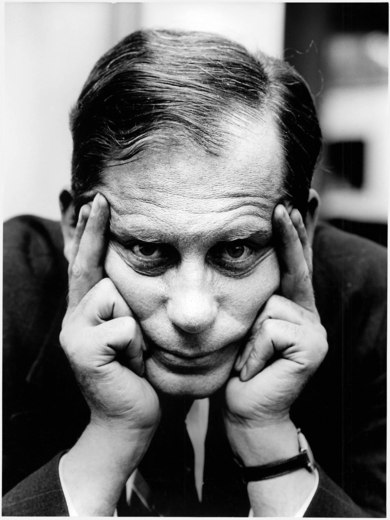Walter Gropius
Walter Gropius
Ich fühle, daß ich ein ungewöhnlicher Glücksfall bin inmitten all des Unheils rund um meine Freunde – besonders die aus Deutschland …
[I feel that I have had an extraordinary stroke of luck amidst all the doom surrounding my friends – especially those from Germany ... (ed. trans.)]
Walter Gropius in a letter to the British architect Maxwell Fry on 19 March 1940
| Born | on 18 May 1883 in Berlin, Germany |
|---|---|
| Died | on 5 July 1969 in Boston, Massachusetts, United States of America (USA) |
| Exile | Great Britain (United Kingdom), United States of America |
| Profession | Architect, Designer |
When Walter Gropius went to England in October 1934, he did not think that he would spend the next two and a half years living there. His planned stay in England was connected to a project that he was working on. Walter and Ise Gropius wanted to return to Germany after he had completed the commission. He was probably hoping that the bad work situation in Germany, caused by the dominance of Nazi aesthetics in architecture and design, would be temporary.
Outside of Germany, Walter Gropius continued to be, on account of his lectures, publications and contacts with important people, a sought-after architect. Walter Gropius had earned himself a reputation as the founder of, and a talented teacher at, the Bauhaus college of design. In the UK he was at first faced with language difficulties. He had to rely on help for the translation of his lectures and journal articles, but subsequently acquired the necessary language skills in language courses. The imperial system of measurement was another thing Gropius had to adjust to in practicing his profession.
Gropius benefited from working closely with other architects, as did they with him: from 1934 to 1937 with Maxwell Fry in London, from 1937 to 1941 with the German emigrant architects Marcel Breuer and Konrad Wachsmann in the United States.
With his appointment at Harvard in 1937 as Professor of Architecture and in 1938 as head of the architecture department, Gropius decided to leave Germany finally behind him for good and emigrated to the United States. After the death of Ise’s sister, Walter and Ise Gropius took in her daughter Beate, who also moved with them to the US in the summer of 1937. Six months after his arrival in the United States, Walter Gropius requested citizenship, which was granted to him in 1944.
Selected works:
Dartington Hall theatre conversion, Totnes, South Devon (1935)
Haus Gropius, Lincoln, Massachusetts (with Marcel Breuer) (1938)
Frank residential house, Pittsburgh (with Marcel Breuer) (1939/1940)
Aluminium City Terrace, New Kensington, Pennsylvania (with Marcel Breuer) (1941/1942)
The Packaged House System for the General Panel Corporation (with Konrad Wachsmann) (1942-1952)
Further reading:
Isaacs, Reginald R.: Walter Gropius. Der Mensch und sein Werk (2 Bände). Berlin: Gebr. Mann 1984
Nerdinger, Winfried: Walter Gropius. Berlin: Gebr. Mann 1985




